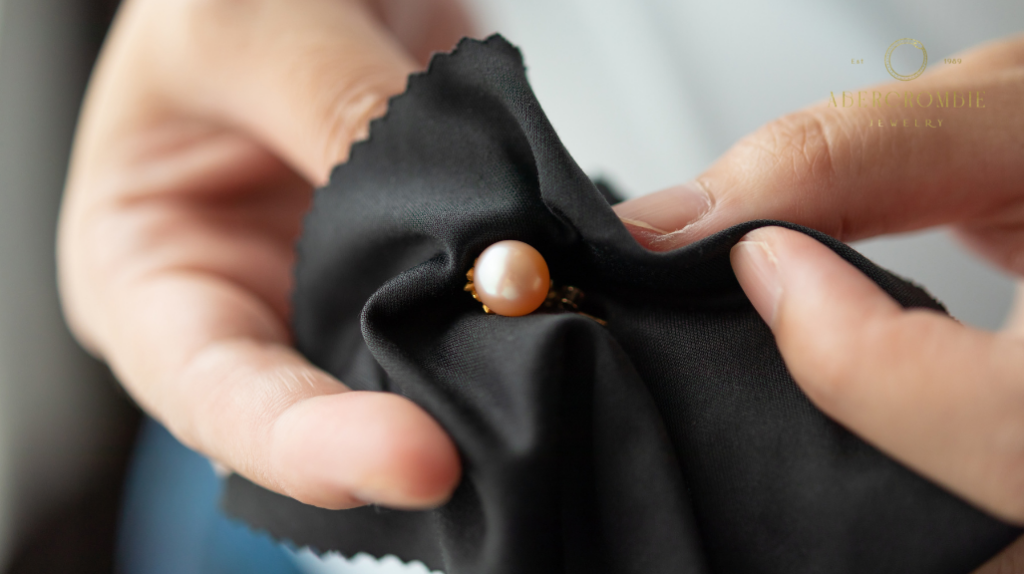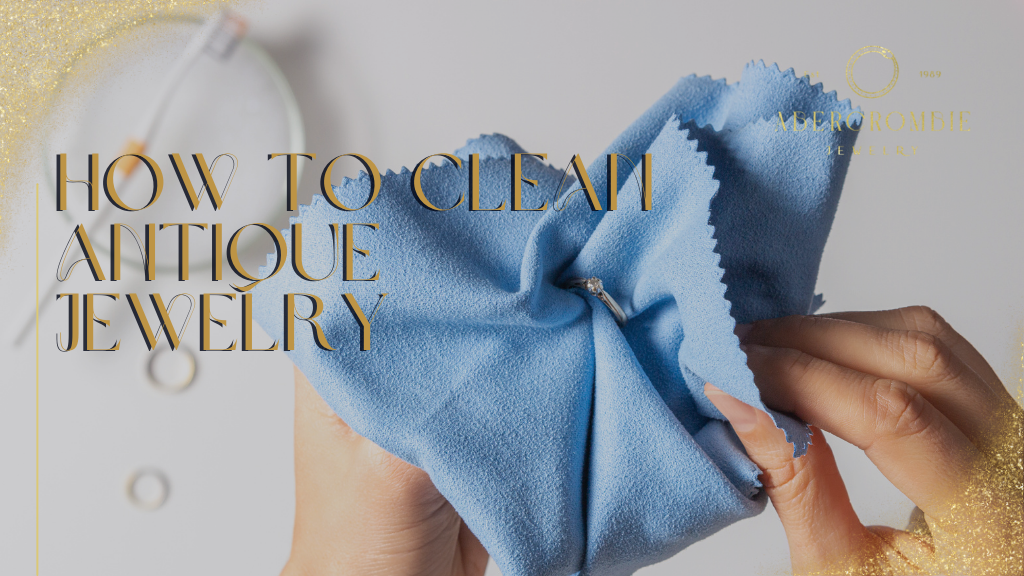All kinds of jewelry need proper cleaning if you want them to stay shiny and beautiful for many years. Antique jewelry, specifically, requires a specific cleaning process so that it doesn’t get damaged.
An “antique” piece of jewelry is considered one that is at least 100 years old. Pieces that are so old are much more likely to get worn out over the years. That doesn’t mean you can’t restore them to their original shape, though.
Cleaning antique jewelry isn’t as complicated as some people make it to be. As long as you get the proper cleaning solution and are patient, you can make all your jewelry pieces shine again, no matter how old they are.
Below is a guide on how to clean antique jewelry, including which solutions you should use based on the metal and stone type used in the piece, tips on how to prevent further wear and tear, and more.
Why Should You Clean Your Vintage or Antique Jewelry?

Antique jewelry pieces are more delicate than newer ones. As mentioned in the introduction, an older jewelry piece will get worn out faster, regardless of where it’s stored.
Keep in mind that vintage and antique jewelry aren’t the same thing. A jewelry piece is considered “vintage” when it’s between 50 and 100 years old. Since they aren’t as old as “antique” pieces, they may not need such a strict cleaning regime.
There are many reasons why someone would want to clean their older jewelry, but here are the two most common ones:
Retaining Value
The older the piece is, the more valuable it might be. However, most sellers will give you an offer for your jewelry based on how well-preserved it is.
If your diamond jewelry is over 200 years old but is also extremely worn out, for example, your buyer may not offer too much for it.
Read more: How Do I Know if my Vintage Jewelry is Valuable
Extended Lifetime
Cleaning your jewelry will preserve it for generations to come. Whether it’s an antique diamond ring or any other piece, you can extend its lifetime by performing cleaning sessions every once in a while.
How Often Should You Clean Antique Jewelry?
It depends on the type of jewelry you have. Sterling silver, for example, isn’t as durable as pure gold, so you might have to clean it more frequently.
On average, you should clean your jewelry at least once a month. If you have durable pieces, you could clean them once every two months. This process will prevent them from deteriorating over the years and keep them as beautiful as they were in the past.

How to Clean Antique Jewelry in a Few Simple Steps
Cleaning jewelry isn’t complicated, but you must always be careful during the process. The slightest mistake could cause irreparable damage to the piece, which will affect its value and longevity.
Here’s a simple yet effective guide on how to become a great jewelry cleaner for all your pieces:
#1 – Identify the Metal and Stone of the Piece
Knowing which metal and stone your piece is made of will help you come up with the best cleaning plan. Rubies and sapphires, for example, can withstand harsher cleaning methods like heat, whereas others like emeralds can’t.
sIf you’re unsure of which materials your jewelry is made of, contact a jeweler you can trust. They can easily tell you what you’re dealing with and give you a few tips on how to keep the metals and gemstones in great shape.
#2 – Check for Dust and Other Residue
A thorough look at your jewelry will tell you how damaged it is. Using a loupe can help you identify dust, residue, and other kinds of damage much faster.
If your piece is too damaged, we suggest you take it directly to a professional. Trying to clean delicate jewelry yourself may make things worse.
#3 – Choose a Professional Cleaning Solution
Even though some people use warm water and soap to clean their jewelry, that solution may not be enough if you’re dealing with certain gemstones.
If you’re buying a jewelry cleaning solution, though, you must choose your product carefully. Most metals have a different chemical composition, so you must get something that fits those specific materials. Using the wrong solution could destroy your jewelry.
Feel free to only use soapy water if your jewelry doesn’t have a gemstone. Otherwise, you may want to get an expert’s opinion before buying your cleaning solution.
#4 – Use a Toothbrush or Soft Cloth to Clean the Piece
A soft, microfiber cloth will be perfect for most types of jewelry, especially if your piece is delicate. Otherwise, you risk scratching the metal.
If you have jewelry with a particular design, the microfiber cloth may not be enough to clean it thoroughly. In this case, you can get a soft toothbrush, dip it into the cleaning solution, and brush it gently against the metal.
#5 – Dry the Jewelry Properly

You should never leave your jewelry wet, as that could damage it even more. Instead, make sure you use a soft towel or cloth to dry the piece.
If you want to ensure your jewelry is completely dry before storing it, find a place to hang the piece until it’s ready.
#6 – Consider Polishing the Piece
You can take a polishing cloth and run it over your jewelry to make it shine again. However, make sure you pick the right option for your piece.
A silver polishing cloth, for example, will only work on silver jewelry. Gold jewelry, on the other hand, will require a special material to make it sparkle like it did before.
You don’t have to polish your jewelry if you don’t want to, but it can help it stay in great shape for generations.
Frequently Asked Questions
Bottom Line
Cleaning your antique jewelry won’t take you more than a few minutes, and that will be more than enough to preserve your pieces for many decades.
Remember that antique jewels aren’t as durable as newer ones, so set reminders for cleaning them once every few months, and you’ll be good to go!

